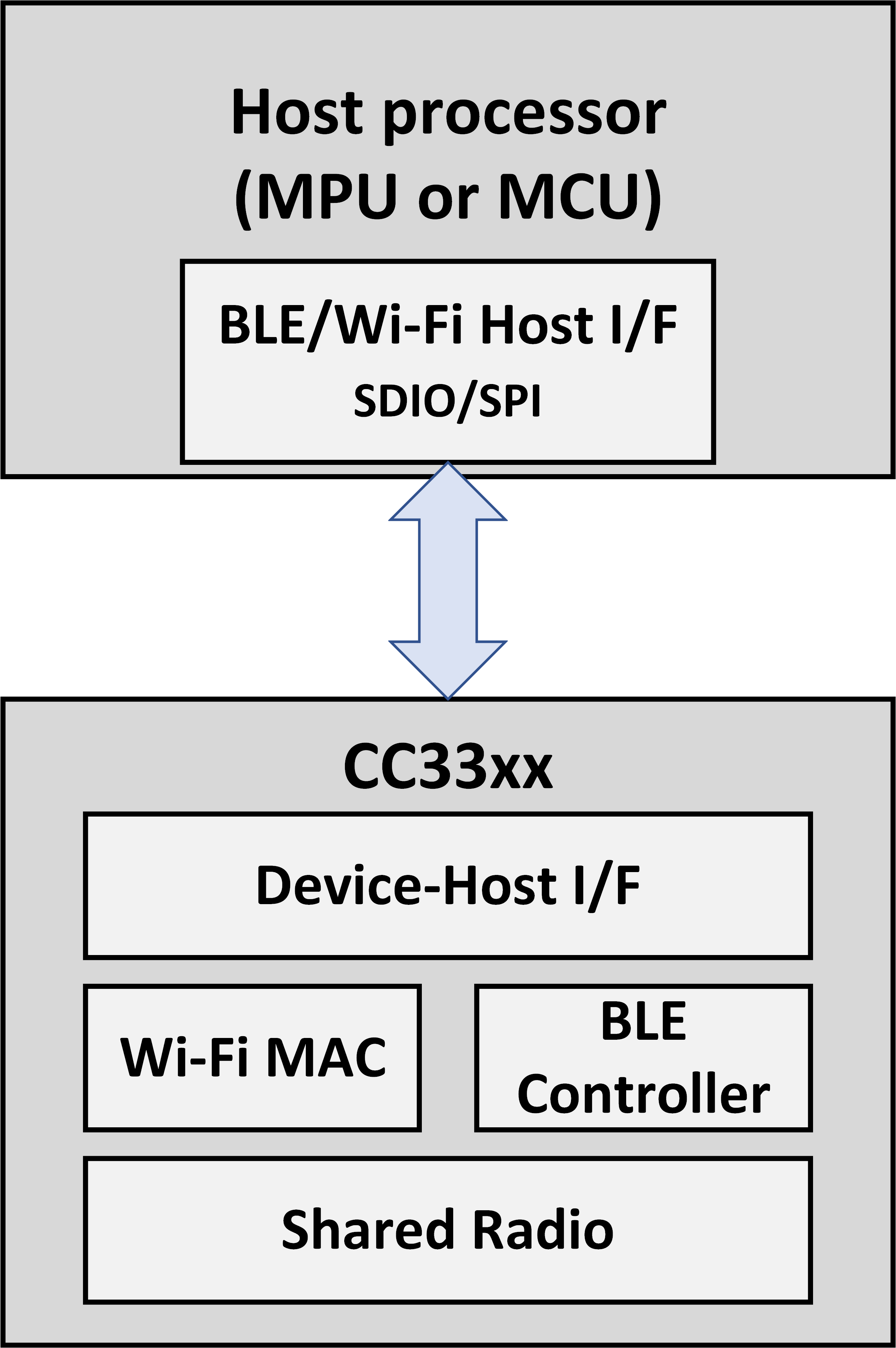SWRA779 September 2023 CC3300 , CC3301
2.2 Shared Host Interface
In shared host interface, Wi-Fi and Bluetooth Low Energy share the same interface which may be either SDIO or SPI (the same hardware lines are used). The main advantage of using a shared interface is reduction in hardware pins that may be used for other purposes. If SDIO interface is used, up to six lines are used and if SPI interface is used, four lines are used. The calculation does not consider the extra interrupt lines. The full table with all pin count option is listed in Table 3-10.
Section 2.2 illustrates the dual host interface setup.
 Figure 2-2 CC33xx Shared Interface
Figure 2-2 CC33xx Shared Interface